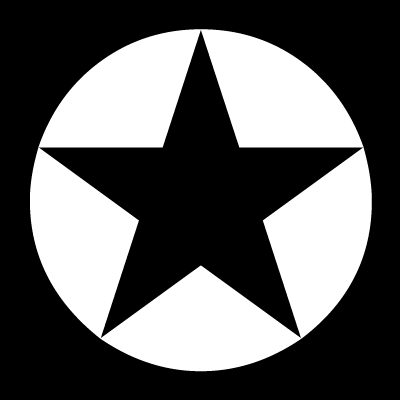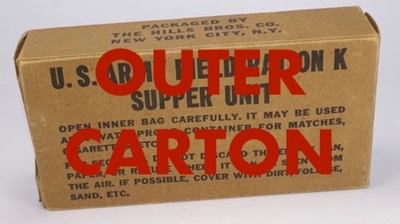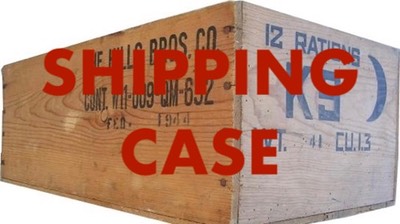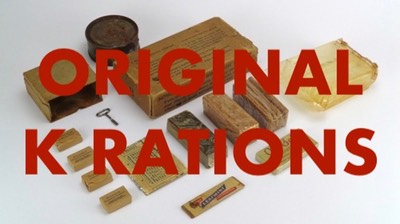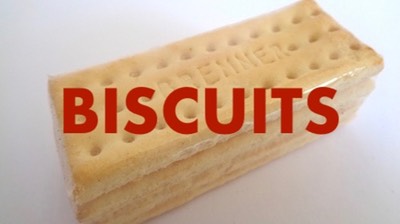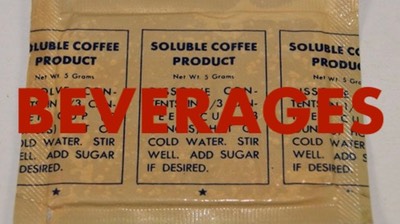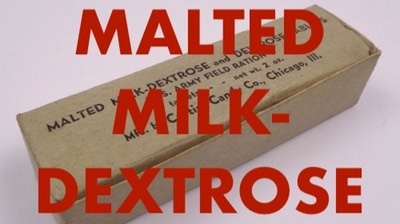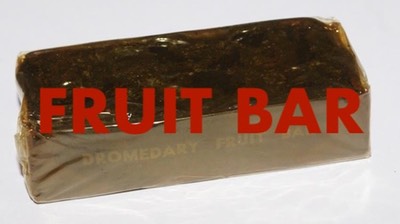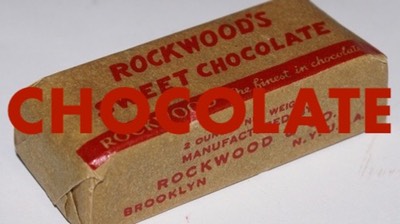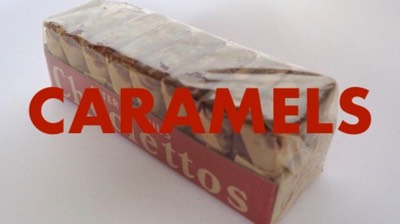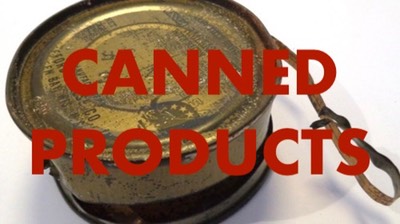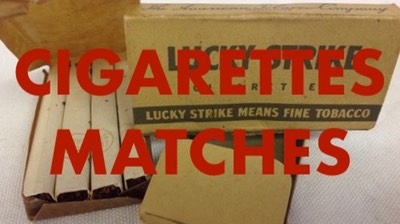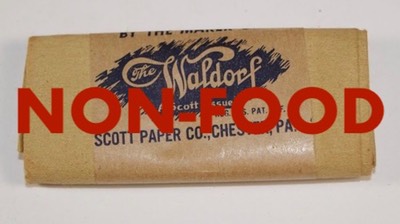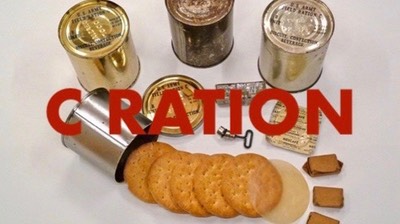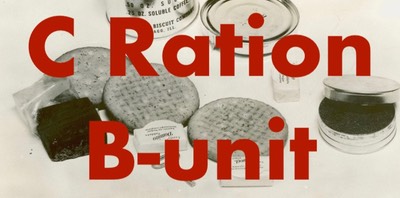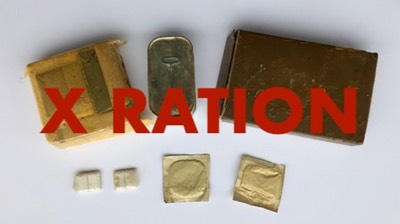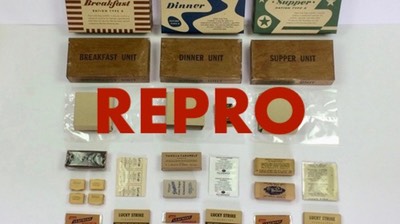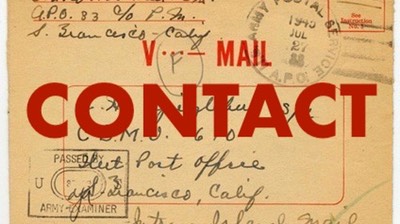
As in the other rations, too, a notice prescribing measures to be taken to avoid malaria was added to the labeling, being placed on one of the main panels of the carton containing the partial dinner unit.
In 1943 the U.S. Army developed a ration that would feed ten men for one day. Standardized on June 7, 1943 as the "Ration, Ten-in-One". There were five separate menus to provide variety.
This group ration included a breakfast of cereals, biscuits and jam, milk, sugar and coffee. The supper consisted of canned meat, canned vegetables, biscuits and butter, and a beverage, like coffee, fruit juice powder, or cocoa. A dessert in the form of hard candy, chocolate bar or a fruit bar was included. The dinner came in handy prepacked units like a simplified K Ration.
The ration was packed on a double "five rations" basis, so that a small group of five man could use it for two days, or ten men for one day.

An early 10-in-1 Ration is shown here with only half of its contents unpacked.
Note that although the Partial Dinner Unit is being used for the noon meal, it is being identified as a Breakfast Unit (U.S. Army Field Ration K (abbreviated) Breakfast Unit).
Two 10-in-1 prototypes were proposed in 1943. The first offered three meals that were to be prepared and eaten as a group. The other prototype used a standard packaged K Ration unit substituting the group noon meal. The 10-in-1 came in three different menus and used one K Ration unit for each noon meal.
The advantage of the individual noon meal package made this prototype preferable as a combat ration.
The number of menus were extended to five menus, thus more variation for the noon meal was needed. Some components, like cigarettes and toilet paper, for ten men, are included in the ration already. So there was no need for that to have those articles included within the K Ration units. Therefor the Partial Dinner Units are a simplified version of the K Ration.

Non-food components of the 10-in-1 Ration: Ten packages of cigarettes containing ten each, ten matchbooks with twenty matches, two asphalt-paper envelopes (top left) with each 125 sheets of toilet tissue, halazone tablets, paper towels, 2-ounce soap bars (on top of the paper towels), can openers.
Issuing the noon meal in a separate package had the advantage that each man could carry his own lunch with him, whether working, on the move, or engaged in actual combat, and eat it whenever he had the opportunity.
Early Partial Dinner Units were heavily based on the K Ration and were in fact identified as Breakfast, Dinner, and Supper units since the composition of its components were basically the same as the early K Rations. This was, of course, confusing since the "Breakfast" and "Supper" units were also ment to be used for lunch.
Only the food components of the K Ration were being used for the noon meal. Since the cans are packed and issued seperatly, the other food components are packed in a small carton.

The label of the Partial Dinner Units changed over time and vary with each manufacturer. Just like the K Ration these units were closed by either tuck-end flaps or seal-end flaps, depending on the packagers ability.
This small carton contained the biscuits, confection, a beverage and sugar. These components with a wire key are sealed inside a cellophane bag. A stick of chewing gum was also included, but not sealed in the cellophane bag with the other components.
The can of either egg, cheese or meat product was issued separately. The Partial Dinner carton together with the can resembled a K Ration. The wire key for opening the can was included inside the cellophane bag.
This carton, together with the seprate can, is referred to as the Partial Dinner Unit. Since it carries a "D" (for Dinner) on the flaps, some people tend to mistake them for, or call it, a D Ration. It is not. The U.S. Army D Ration is a 4-ounce chocolate bar.

The real "D" ration, a 4-ounce emergency chocolate bar.

Partial Dinner Units together with the cans from a Menu #2 10-in-1 Ration is displayed in this official Signal Corps photo. One package is opened, showing its contents still sealed in the cellophane bag. Erroneously the unpacked components contains a roll of Beech-Nut hard candy, this should be a package of chocolate caramels.

The "1st Half of 5 Rations" contained the soft packages, including the Partial Dinner Units, for five men. The Fruit bars are the desserts for supper.
All the cartons and other "soft" packages were packed together in a waxed fiber carton that was placed inside a corrugated box labeled "1st Half of 5 Rations". Two of these boxes together with two fiberboard boxes containg the cans, labeled "2nd Half of 5 Rations", were packed in a large fiberboard box that fitted inside a fiberboard sleeve.

The Partial Dinner Units (three different early versions are shown here) are packed with the other soft components inside a lined box (right) that has been waterproofed with a wax coating. This water proofed box is inserted in a corrugated box labeled "1st Half Of 5 Rations" (left). This explains why the units aren't waxed individually like the K Rations.
Since the cans were packed separately from the softer packages, it was necessary to break up the K Ration units. The cans are packed together with the other cans in a fiberboard box identified as the "2nd Half of 5 Rations".

The "2nd Half of 5 Rations" contained the cans of the 10-in-1 Ration. Note the five K Ration cans on top of the box, these are to be issued with the Partial Dinner Units.
As soon the new 10-in-1 Ration went into mass production the confections and beverages in the Partial Dinner Units changed from their original K Ration composition to provide a better balanced meal.
1st Generation
The August 1943 version of the Partial Dinner Units all have two packages of biscuits, 0.8 oz. sugar, one stick chewing gum and a wire key for opening the can. The differences per menu are as follows:
Menu #1
1 package of hard candy;
1 envelope of Lemon juice powder;
1 can of cheese product.
Menu #2
1 package of Malted Milk -Dextrose tablets;
1 envelope Lemon juice powder;
1 can of cheese product.
Menu #3
1 2-ounce D-bar;
1 envelope soluble Coffee product;
1 can of meat product.
Menu #4 and #5
1 Fruit bar;
1 envelope soluble Coffee product;
1 can of egg product.
Components common to all Partial Dinner Units
2 Packages of small rectangular biscuits (two different types)
0.8 oz. of sugar (one 23 grams carton or 4 individually wrapped tablets)
1 stick of gum
1 steel wire key
Note that there's not much variety and that even #4 and #5 are the same!

Two GI's in the Pacific Theatre are enjoying the food provided by the 10-in-1 Ration. Note the two opened Partial Dinner Units on the crate they are using as a table.
2nd Generation
In March 1944 the 10-in-1 Ration was improved and the Partial Dinner Units now includes new confections that were developed for the K Ration.
All the beverages are now of the fruit juice powder type. All sugar is now granulated and packaged in a 23 grams carton.
According to the new specifications the main back panel is printed with a warning against malaria.
Menu #1
1 package hard candy;
1 envelope Lemon juice powder;
1 can of egg product.
Menu #2
1 package Caramels;
1 envelope Lemon juice powder;
1 can of cheese product.
Menu #3
1 2-ounce Sweet Chocolate bar;
1 envelope Orange juice powder;
1 can of meat product.
Menu #4
1 Fruit bar;
1 envelope Lemon juice powder;
1 can of egg product.
Menu #5
1 Fruit bar;
1 envelope Orange juice powder;
1 can of cheese product.
Components common to all Partial Dinner Units
2 Packages of small rectangular biscuits (two different types)
0.8 oz. of sugar (23 grams carton)
1 stick of gum
1 steel wire key

A warning against malaria was printed on the back panel as per March 1944 specifications. (Before this date the warning was sometimes printed on a side panel.)
3rd Generation
In August 1944 specifications for a can of dessert was added to the noon meal. These cans were of the 300 x 106 size containing approximately 3 1/2 ounce of some kind of pudding. These cans were the exact same size as the K Ration cans.
The cans containing the egg, cheese or meat products were replaced with a larger can (300 x 200 size) containg six ounces of a more solid meat product. Only menu #5 retained the cheese product. The amount of cheese, however, was reduced from 4 to 3 1/4 ounces, consequently a smaller can was used (300 x 102 size).

A 6-ounce can is opened to show its contents: two hamburgers. Next to the hamburgers is shown a small can opener that is included in each “1st Half” box of the 10-in-1 Ration.
All the confections are now a type of candy bar. The amount of sugar was increased to 1.2 oz. and is of the compressed block type, the biscuits, chewing gum and wire key remainded unchanged.

A new type of candy bar made by Mars now used with the Partial Dinner Units.
Menu #1
1 Starch Jelly bar;
1 envelope Grape juice powder;
1 can of Hamburgers;
1 can of Fruit pudding.
Menu #2
1 Caramel Nougat bar;
1 envelope Lemon juice powder;
1 can of Pork Tenderloin;
1 can of Steamed Fruit Cake.
Menu #3
1 2-ounce Sweet Chocolate bar (later replaced by two 1-ounce bars in 1945);
1 envelope Orange juice powder;
1 can of Pork and Corn;
1 can of Plum pudding.
Menu #4
1 Chocolate Coconut bar;
1 envelope Lemon juice powder;
1 can of Pork and Applesauce, or Pork Sausage Patties and Apples;
1 can of Fig pudding.
Menu #5
1 Vanilla Fudge bar;
1 envelope Orange juice powder;
1 can of Cheese product;
1 can of Pineapple Rice pudding.
Components common to all Partial Dinner Units
2 Packages of small rectangular biscuits (two different types)
1.2 oz. of sugar (compressed block of granulated sugar)
1 stick of gum
1 steel wire key

A late war Partial Dinner Unit, menu #2, with it's contents. This package contains two packages of biscuits, a block of compressed sugar, lemon juice powder and a Caramel Nougat bar made by Mars. The key for the can is included inside the cellophane bag. Note that the label on the carton also mentions a can of dessert.
The two confections left and the two right in the top row, and the chocolate bar (left, middle row) are the candy bars used as the confection component in the Partial Dinner Units of the latest version of the 10-in-1 Ration.
